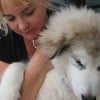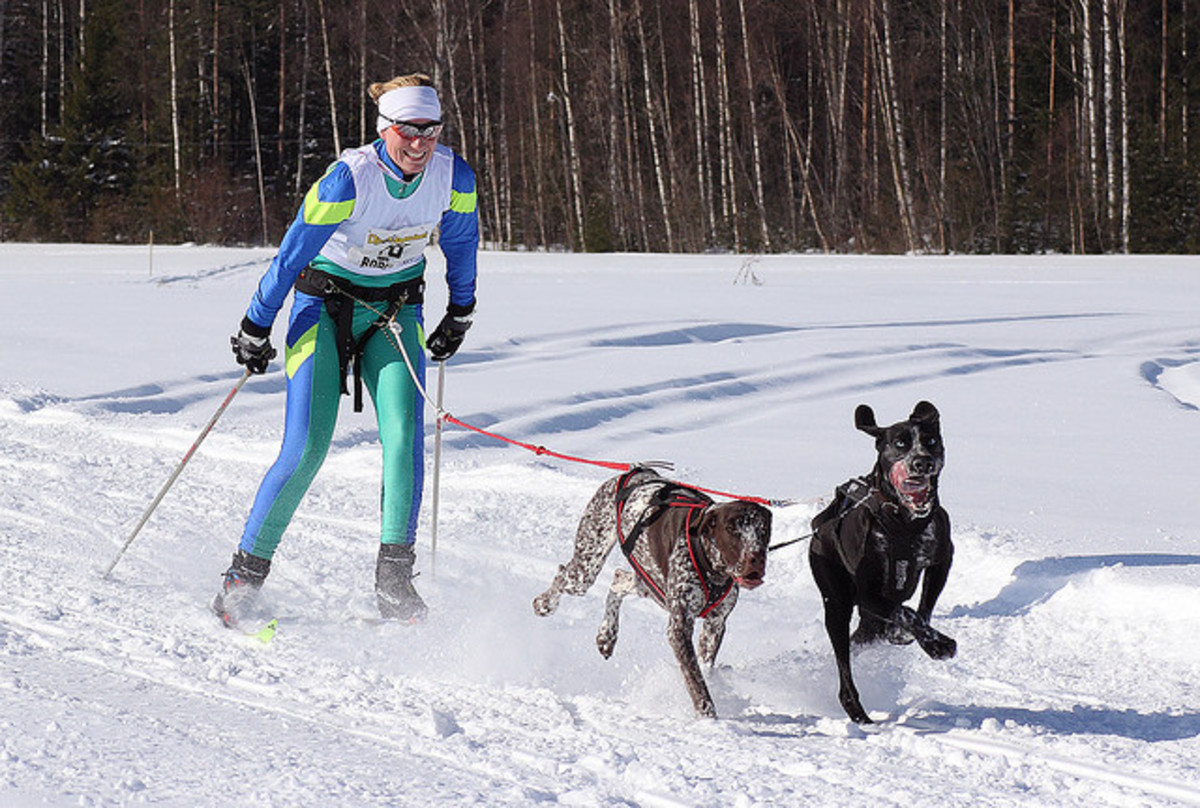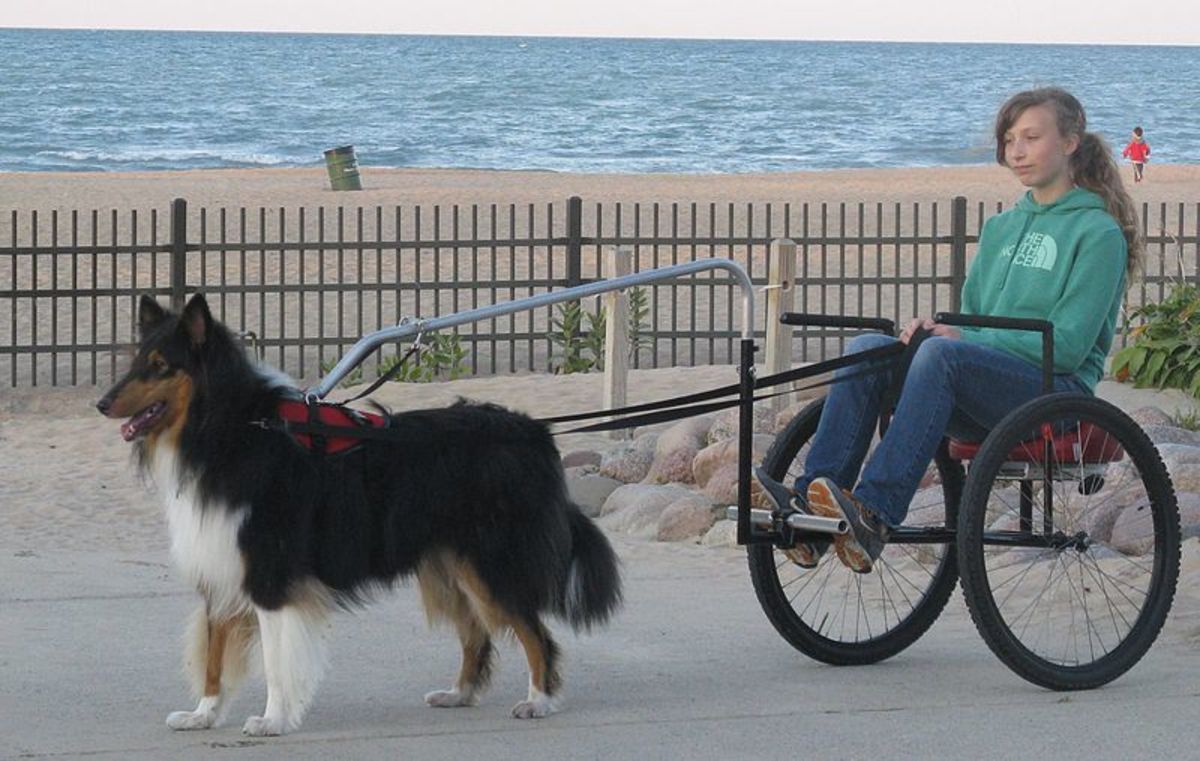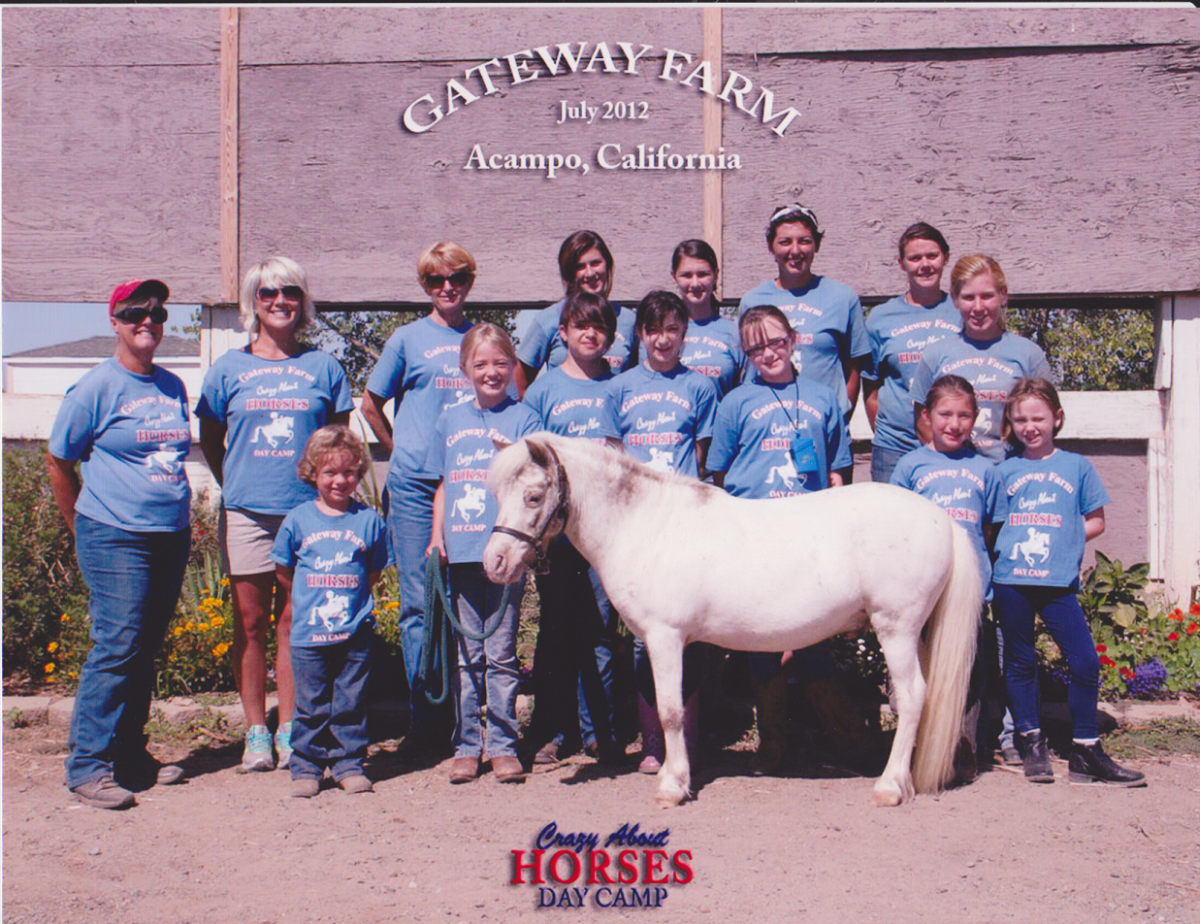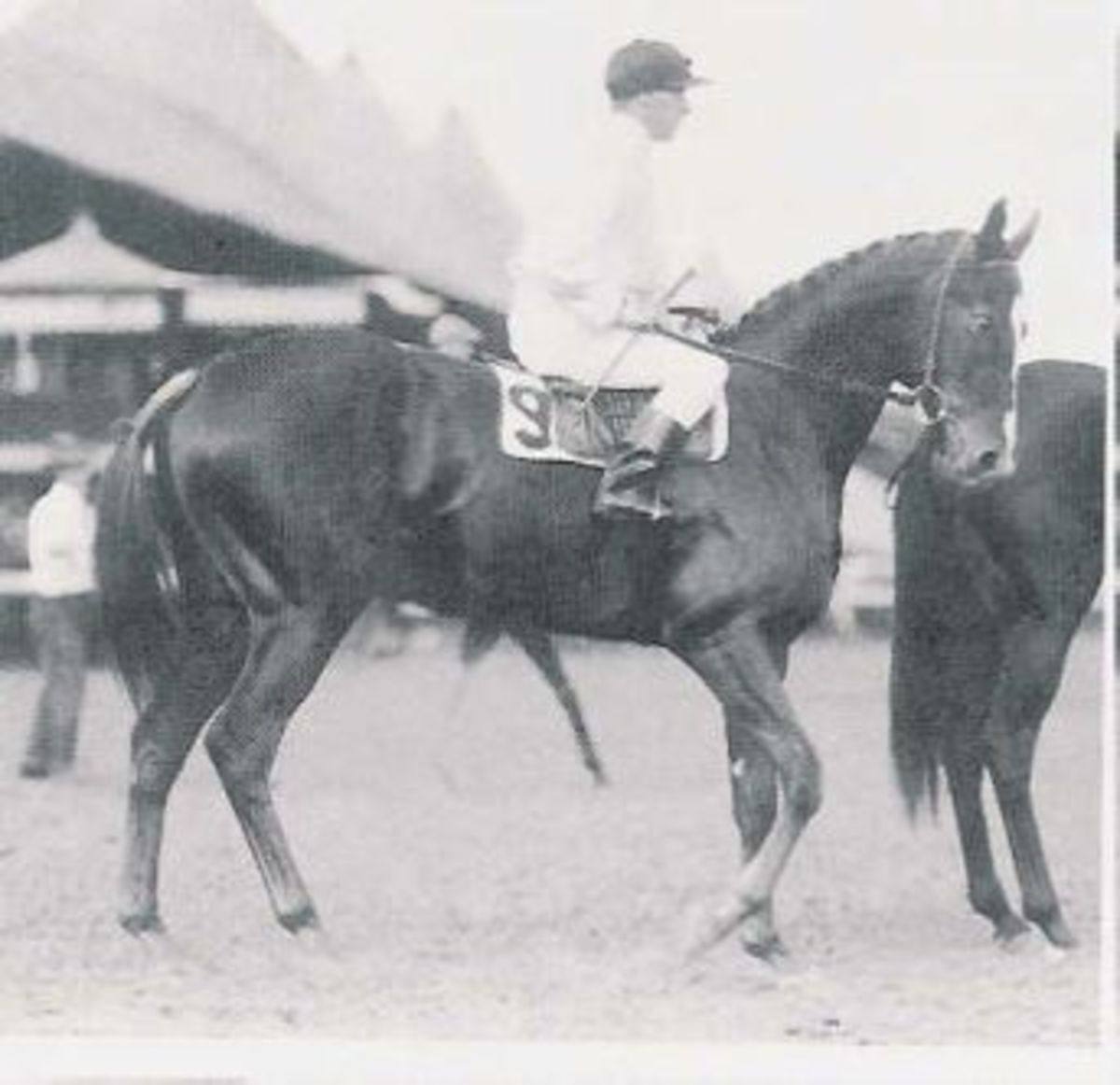How to Mush With Husky Dogs
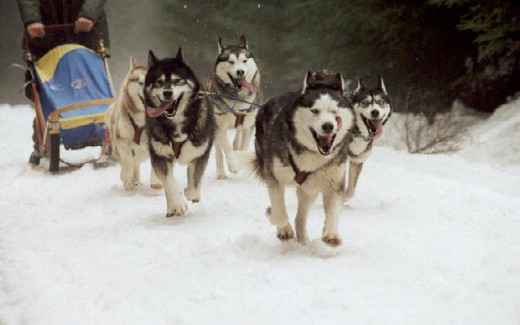
Mushing and Dogs That Pull Sleds
Mushing has been a "dog sport" that's been around for centuries. Since the beginning of man's relationship with dogs, there has been a symbiotic relationship between man and beast. This has always involved some form of pulling--dogs pulling something (or someone) from here to there.
Mushing evolved out of necessity. It was the only way for people to get from one place to the other in times before transportation existed. Or to move things like the mail, deliver milk or even vital serum for children in Alaska which eventually started the Iditarod trail. In large part, the size of the dogs or the number of dogs had a direct bearing on their particular work capacity.
For instance, Alaskan malamutes are typically not known for their speed. (This author can attest to this fact!) They were freight dogs in days gone by and literally could pull a house across the ice. They were used to move large objects over distances and are still today one of the top dog breeds in pulling contests. This author has seen a single malamute pull an entire wagon filled with people. Pretty impressive.
However, smaller dogs like the Alaskan Husky pictured below or the well known Siberian Husky are known for their great agility and speed, able to cover long distances in amazing times. They are known for both speed and endurance.
In the current mushing world though, it's important to note that more and more dogs are being termed "husky" dogs or "snow dogs." Many mixed breeds and breeds that one never would have thought of as sled dogs are turning up at mushing competitions everywhere.
The driving force behind mushing dogs is their desire to pull and their desire to run. If you have those two elements, just about any dog can be a mushing dog.
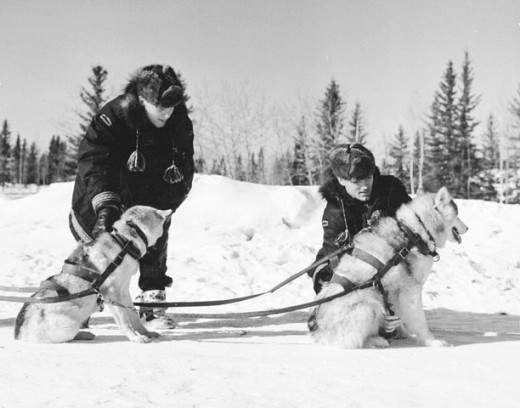

Evolution of Mushing
Whereas mushing once was done out of necessity as in moving things or people from place to place, today's mushing arena has changed dramatically. That is not to say that it isn't still used today as a form of transportation in many situations where regular modes of transportation would not work. Many places all over the world still use mushing teams as the only mode of transportation and dogs are sought for their intelligence and stamina.
Events such as dog sled races and the famous Iditarod have piqued people's curiosity such that nowadays, so called dryland mushing is a term you find cropping up more and more.
When this author fell in love with her first malamute, it quickly became evident that this breed was meant for something grand. On the advice of a breeder, I began a love affair with malamutes and dog sports under the umbrella called urban mushing.
Just a few of the sports that qualify as mushing
- Bikejoring--dog pulling someone on a bike
- Skijoring--dog pulling someone on skis
- Scootering--dog pulling someone on a scooter
- Pulka-ing--dog pulling someone on a toboggan
- Blading--dog pulling someone on roller blades
- Carting--dog pulling someone in a cart or just pulling the cart
- Sledding--dog pulling someone in a sled or behind it
- Freighting--dog pulling a heavy load on a sled or barge
- Weight pulling--dog pulling a heavy object such as a refrigerator
There are some basic principles that apply across the board to mushing in any arena. It really doesn't matter either if you have one dog or you have 13 dogs. Of course it becomes exceedingly more difficult to control 13 as compared to one but the philosophies and the techniques will basically all stay the same.
Most of the above activities can be done with one or more dogs and the difference in this activity from merely roller blading with dogs on a leash for instance is that the dog or dogs is in harness and they are following specific commands.
There are also competitions for all the styles of mushing mentioned above and equipment suitable for all for sale.
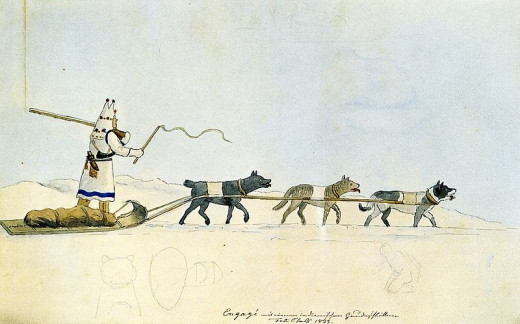

Huskies and Mushing
Usually lighter in weight than Alaskan malamutes, Siberian huskies, Alaskan Huskies or even a smaller dog such as a Greenland dog are built for speed and endurance. They have a lot of energy to spend.
The dogs pictured below are usually about the size that you see in dog sled races or endurance runs such as the Iditarod.
There are usually several if not many dogs pulling a sled whereas in scootering for instance, usually 2 huskies will be sufficient to pull a normal weighted person--even 1 as they are extremely strong.
For dogs who are sled dogs, it's necessary to train in the off season which means without snow. Urban mushing like scootering, bikejoring or carting provide training in a setting compatible with warmer weather and situations without snow.
This author has seen a friend harness up a 13-dog team to a 4-wheeler and run them at night on a timber road to keep them sharp and in shape for sled mushing later in the year. For dogs (and owners) who are serious about mushing, training is a 12-month a year proposition.
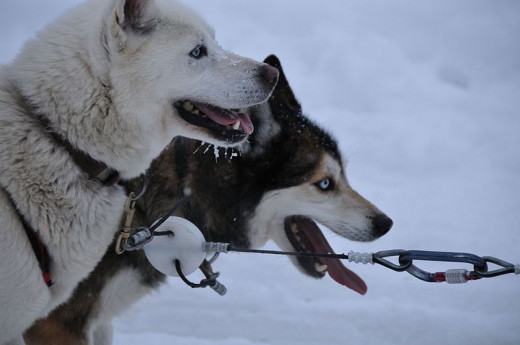
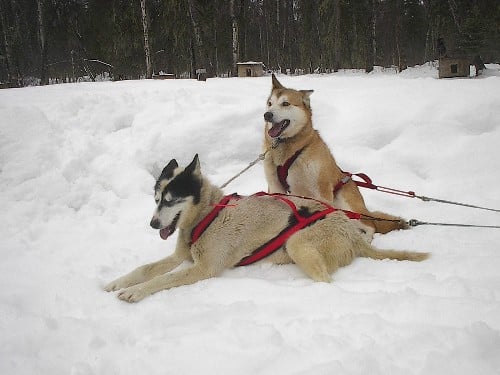

Mushing with Huskies
This BBC short segment shows the thrill of riding in the sled and then actually mushing the huskies through the snow and ice.
As the commentators note on the program, there is nothing quite like the silence and the beauty of riding behind a mushing team of dogs.
It's something one has to experience to understand completely.

Pecking Order of Mushing
When mushing with large or even smaller teams of dogs, every dog has a role. As the picture indicates, the order is determined by the dog's particular strengths--not physical strength necessarily but also mental strengths.
In order front to back:
- Lead dogs or leaders--these are the guys with the brains and common sense and who won't lead the "mission" into trouble--they are as dependable as night and day and may be single or double in number
- Swing dogs or point dogs--these are right behind the leaders and well--they follow the leaders wherever they lead--they play a pivotal role literally because they keep the rest of the team on track behind the leaders and lend their support in terms of following the scouts or leaders
- Team dogs--these dogs are a middle link and in smaller teams, don't exist because the position is taken by the swing dogs--these dogs just lend strength to the team but don't qualify as leaders
- Wheel dogs or wheelers--these are the dogs with muscle that are strong physically but also calm and know how to give steady commitment to the mushing task at hand but don't get frazzled by things like the proximity of a large sled behind them
When dogs with all these roles come together, it can be a little chaotic as most all dogs this author has seen involved in any kind of mushing are eager to be moving. They, however, find the time to have spats with each other, get tangled or even break the tug lines and cause a cacophony of sound until the moment they are released I have never heard in my life.
With urban mushing on a scooter for instance, it's imperative to tie out the dogs say to a bumper to keep them from running off with the scooter. In sled mushing, the snow brake is there for a reason as well. When dogs are put into harness, they know what's coming up and they can't wait to get at it.
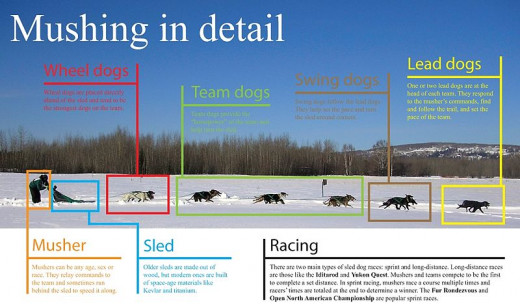

Learning How to Mush with Dogs
As the photos illustrate below, any dog can be taught to mush. Whether it's snowshoeing with a pup (Griffin shown below on a snowshoeing tour) or scootering (see video below), you have to start somewhere.
The younger you start with a dog, the more success you will have but that is not to say that any dog can't be taught to mush. Any size dog can be taught to mush provided they are healthy enough for strenuous activity and can pull a certain amount of weight. Even dogs that are too small to pull humans can still be taught to "mush" by pulling small carts.
Why mushing? It's actually a very rewarding thing for a dog to do. Most dogs are working dogs deep down and by giving them an activity to accomplish, especially one with which they can be successful if trained properly, it makes them right with their world. A bored dog is a bad dog. A restless dog is a digger, a jumper, a dog usually looking for trouble.
When getting into mushing, you have to spend the time training your dog before you actually do the activity, as this author learned the hard way. I tried to roller blade with my 100 pound malamute without any training and although a very funny story now, it could have been disastrous for both of us.
Basic pulling techniques for puppies (or any age dog) can be learned. Harnesses, tug lines and other equipment can be purchased from many places on line. Just look up "urban mushing" and you'll find more than enough ideas!
After learning to be in harness, dogs have to be taught commands--the most important of which I can attest to--whoa! When starting out, for instance with scootering, we got all the equipment and harnessed our 2 dogs up as if we were actually doing it. However, due to Griffin being young and not able to pull weight, we simply walked him through it for month after month and went through the commands. We also did other events such as snowshoeing with him in harness so he got the feel of what we wanted and knew the commands.
When applying the commands and the principles later when he was old enough to finally pull weight, it was an easy transition. The only difficulty we encountered was the excitement factor when other dog teams are involved--but that is only part of the mushing process as well and learning to deal with all that excitement.
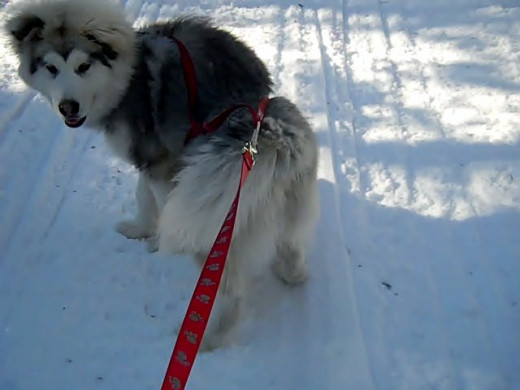
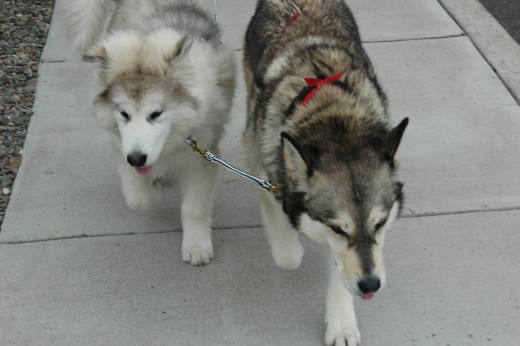
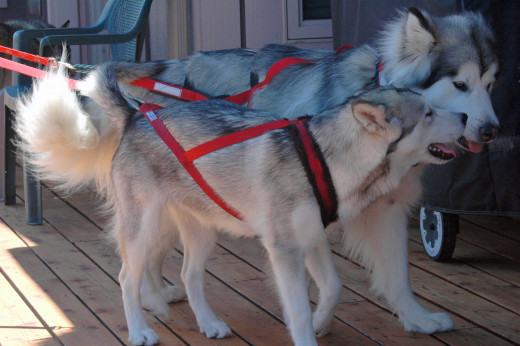

Mushing and Dogs
There are many ways to mush huskies and many ways to mush countless other breeds of dog. There are innumerable venues from competitive to just having some fun with your dog.
This author encourages safety at all times whatever way you mush with dogs. Safety for them and safety for you.
My tips from experience:
- Never push a dog in hot weather--many people recommend never running them in over 60 degree weather, especially if they're a double coated dog
- If running in icy or extreme cold, make sure they have booties on
- Always carry water and don't let them (or you) get dehydrated
- Allow at least an hour or so before and after strenuous runs for your dog to rest his or her stomach
- If you're doing urban mushing on pavement--bad news for your dog's bones and feet--if you happen to fall as this author did going 25 miles per hour--it really hurts
- Better and recommended to run on dirt surfaces or grass
- Wear helmets, elbow and knee pads if you plan on running on anything resembling a hard surface
- Know your commands but more importantly--make sure your dog knows the commands--it doesn't matter if you use "gee" or "hike"--anything that you and your dog both understand and that controls your dog
- Don't expect miracles--some dogs are wonder dogs and take to it like a fish to water but some dogs just don't see the "magic" of it and might need some motivation
- Griffin is more laid back and prefers to lope along whereas Gabby is a powder keg waiting to explode--one motivates the other and by running on separate scooters, it gives Griffin incentive to pick up the pace
- Whatever venue you try if you are new to mushing--have fun--enjoy the thrill of the ride and the wonderful peace you can experience watching your dog do something so natural for them. Whether a husky, a malamute, or a labrador--there is something magical about riding behind (or beside) a dog mushing--it's a thrill I'll never forget
Training Starts Early

Great Example of Urban Mushing
Watch the video below of siberian huskies mushing for a fantastic example of dry land mushing. It's pretty remarkable as the gal is roller blading and going very fast--while video taping the entire thing.
The thing I found fascinating about this video was that her dogs had loose dogs leap out at them while they were running past and maneuvered through groups of people and more dogs all without getting distracted and keeping the owner upright.
If you've ever mushed, you'll know that that takes a lot of discipline on the part of the dogs. I was hoping at the end, however, that she meant for the dogs to actually take off into the grass and jump into the pond. Hopefully, that was not a moment so typical of this author's situation as in "oops--we're experiencing a slight detour here--hang on."
